For the first time in three years, the incoming NHL Draft class has convened in Buffalo for the league’s Scouting Combine.
Cancelled in 2020 and 2021 due to the pandemic, the combine has returned to Buffalo’s KeyBank Center and Lecom Harborcenter this week, giving the league’s 32 clubs one final chance to assess this crop of big-league hopefuls before the 2022 NHL Draft in Montreal.
Ninety-six prospects have been invited to the combine, which began on Monday and runs until Saturday. Sixty three forwards are in attendance, as well as 30 defencemen and three goaltenders. Highlighting the group of invitees are Canadian centreman Shane Wright, Slovakian winger Juraj Slafkovsky, and American centre Logan Cooley — the trio projected to fill out the top three spots when the draft rolls around on July 7.
Wright leads the pack, the Burlington, Ont., native having amassed 32 goals and 94 points in 63 tilts for the OHL’s Kingston Frontenacs this season. Long expected to be the first name called when the Montreal Canadiens take the stage and make that No. 1 selection, Wright’s made clear that he feels the same.
“I believe that that’s where I should go. I believe that I’m the best player,” he told Sportsnet’s Sam Cosentino recently. “I’m a competitive guy, and I want to be in that spot. I don’t want anyone to take that away from me. I believe that I’m deserving to be in that No. 1 spot, and I believe that I’m going to be the first pick.”
Slafkovsky, who’s spent the past few years suiting up for the Finnish side TPS, enters the draft as the top-ranked international skater. The big-bodied winger saw his draft stock soar even higher at the 2022 Olympic Games, as he put up seven goals through seven games to earn tournament MVP honours and help Slovakia win bronze — the first Olympic medal the country has claimed in the sport.
Cooley is the latest in a growing line of elite talent to come from the U.S. National Team Development Program, which has seen six of its players selected in the top 10 in the past three drafts alone. Cooley — who’s one of nine NTDP players invited to the combine — looks certain to add to that group, and could become the highest-drafted player to ever come out of Pittsburgh.
While the central component of the combine is the fitness testing — the bulk of which will take place on Saturday — the week also gives NHL team brass a chance to meet one-on-one with prospects. The Canadiens have already met with all three of Wright, Slafkovsky and Cooley ahead of their first-overall selection.
Next on the docket is Saturday’s slate of drills. Here’s what the trio and their fellow prospects will be working through:
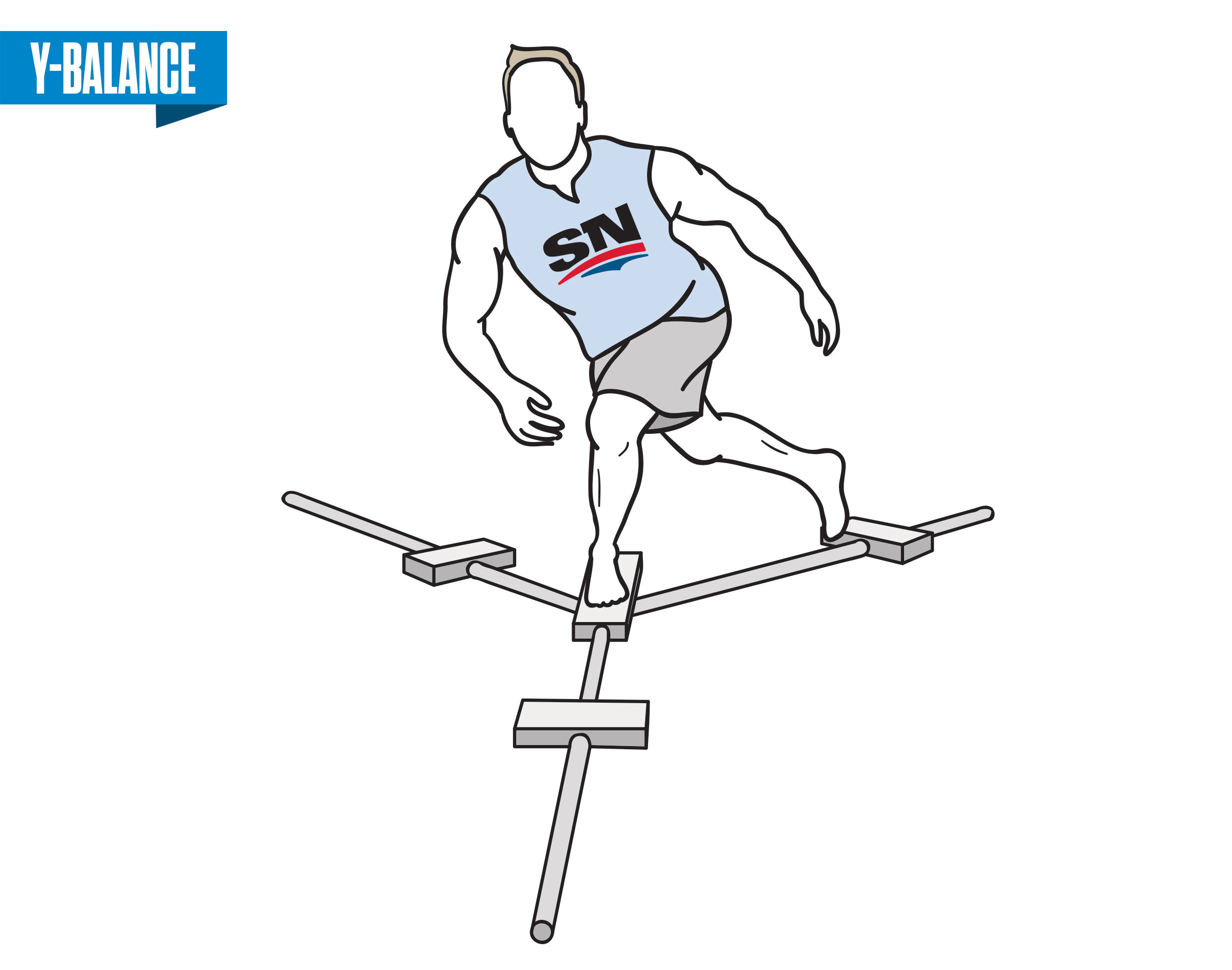
First up is the Y-Balance, a dynamic test that “requires strength, flexibility, core control and proprioception” (the ability to sense movement and body position). Consisting of three movement directions — anterior, posteromedial and posterolateral — the goal of the test is to maintain a single-leg stance while reaching as far as possible with the other leg. Each test is repeated three times, with the maximum reach in each direction recorded. The Y-Balance is used to “assess physical performance, demonstrate functional symmetry and identify athletes at greater risk for lower extremity injury,” according to the league.
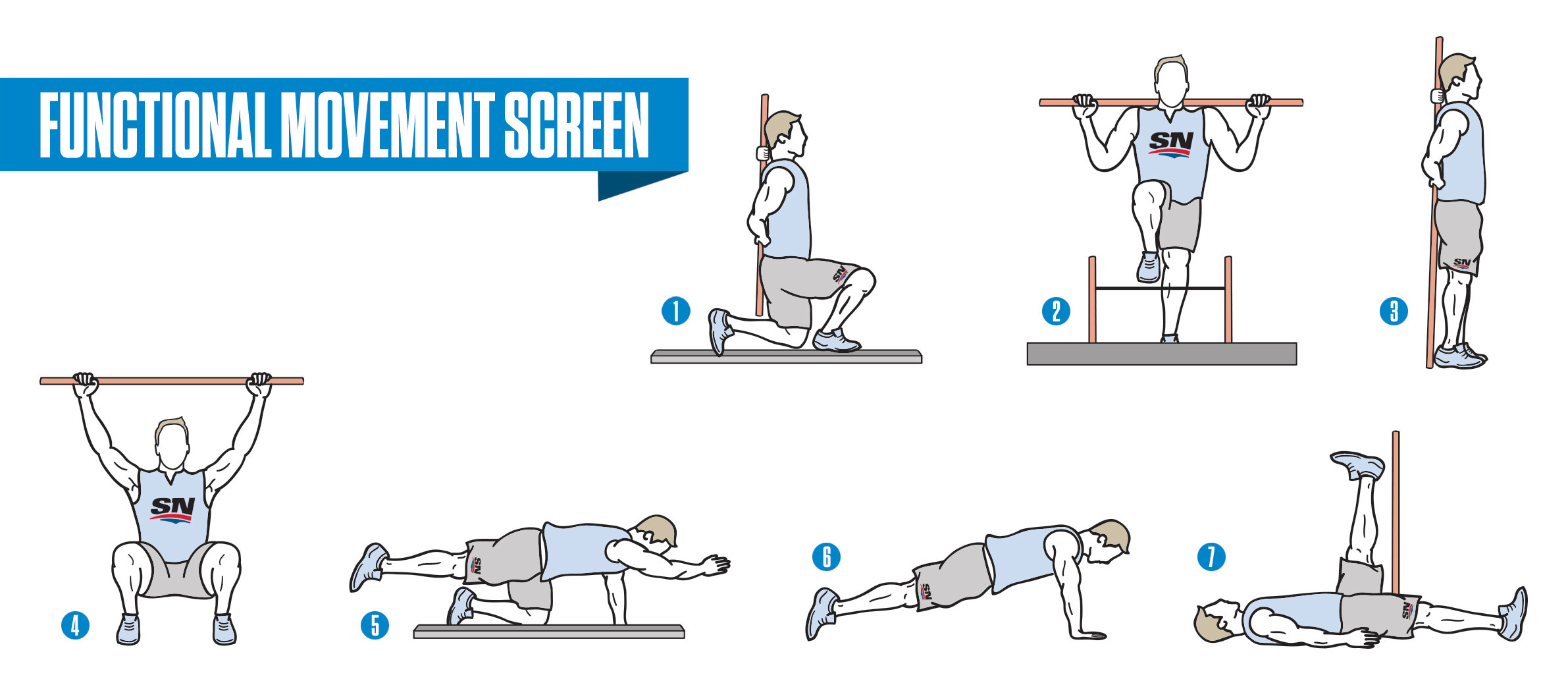
The Functional Movement Screen uses a grading system (0 to 3) to assess a player’s mobility and stability via seven movement tests: deep squat, hurdle step, inline lunge, shoulder mobility, active straight leg raise, trunk stability pushup, and rotary stability. The goal is to identify “the quality of the basic movements possessed by an athlete, which in turn determine the athlete’s ability to improve sport-specific skills.”
The inclusion of the Functional Movement Screen stems from the fact that athletes often have limitations, weaknesses or right/left-side imbalances in basic levels of movements, according to the league, which can be masked by compensatory or substitute movement patterns — these issues can negatively impact motor learning, movement perception, body awareness and mechanics, which can undermine improvement of sport-specific skills, so the Screen is carried out to make athletes aware of any limitations or imbalances.
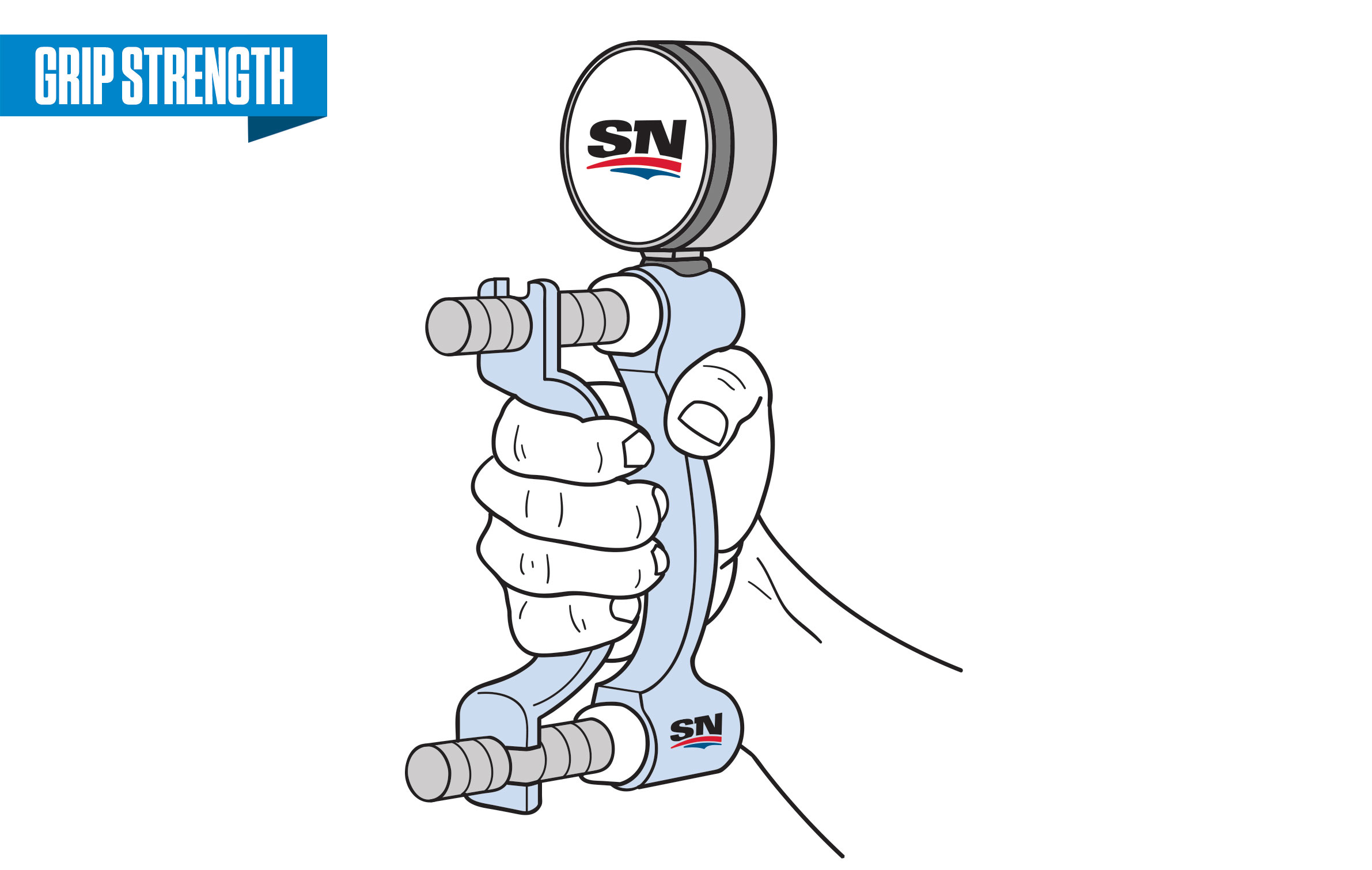
The Grip Strength test is fairly straightforward — players will adjust the hand grip dynamometer to their hand size, fully extend their arm, and squeeze the dynamometer as forcefully as possible, with the test conducted on each hand.
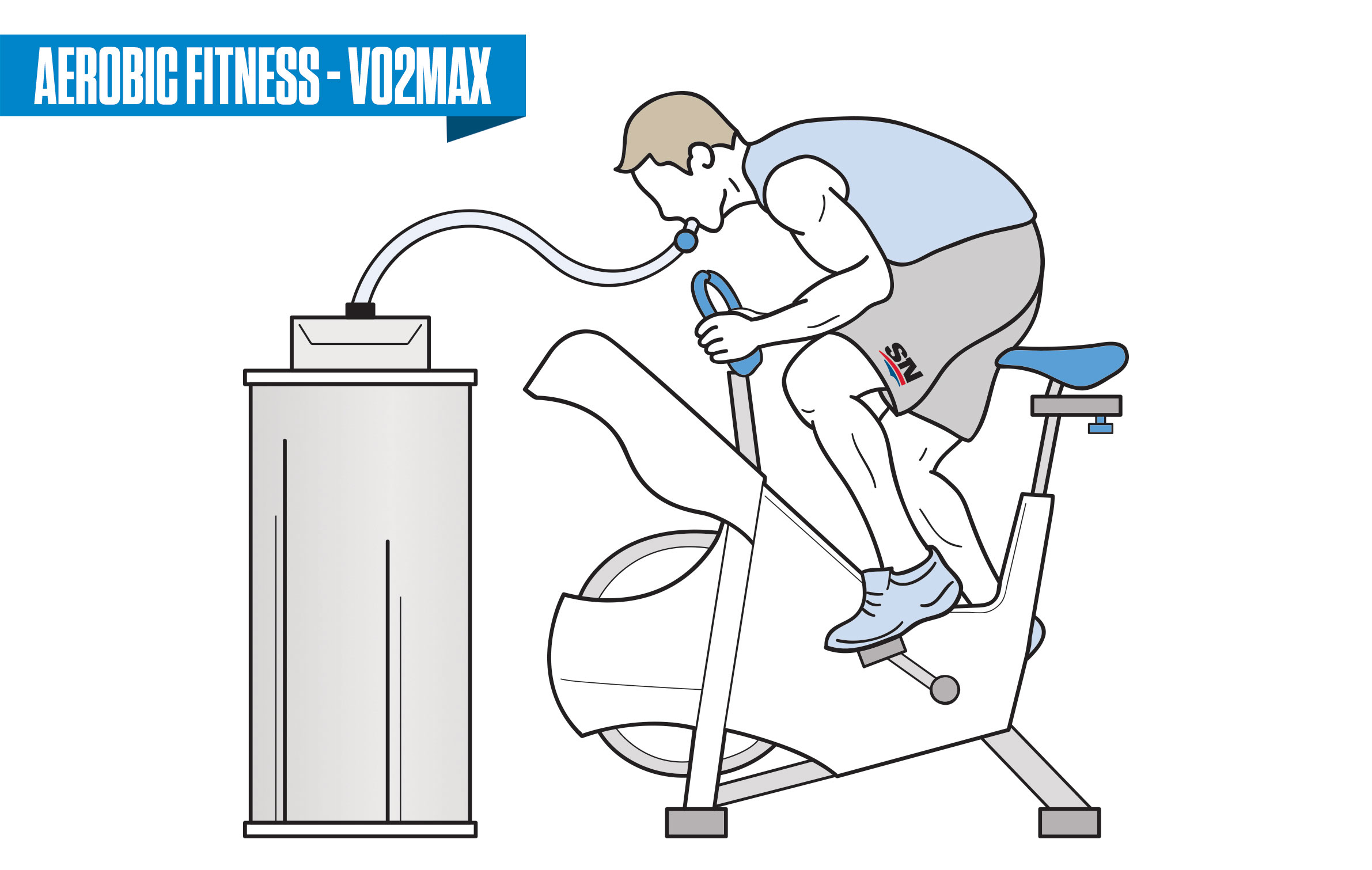
The athletes’ aerobic fitness — that is, the capacity of their cardiovascular and respiratory systems to supply oxygen to their muscles — is assessed by measuring “the amount of oxygen utilized during maximal exercise employing volume determination and analysis of expired air.”
The test is carried out on “a professional grade spin bike (Watt Bike) cycle ergometer using a Cortex Metalyzer VO2 cart.” Essentially, the athlete is seated on the bike with a heart rate strap fit across their chest and a silicon face mask as well. The athlete will move through the different levels of the test while the Metalyzer monitors their heart rate and VO2, recording breath-by-breath data.
The test progresses as follows:
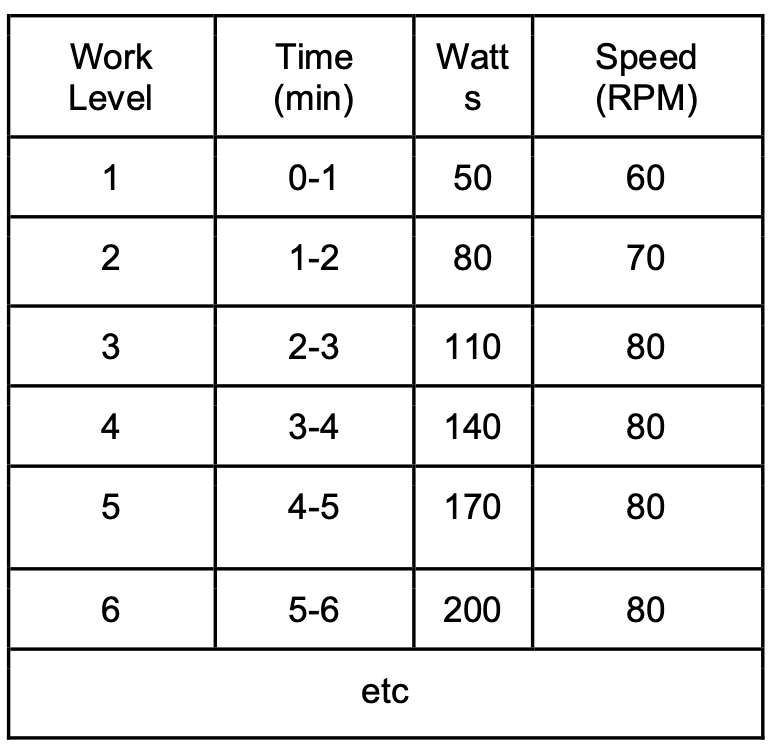
It concludes either when the athlete stops pedalling, when they experience chest pain or difficulty breathing, or when the athlete can no longer maintain the required rpm.
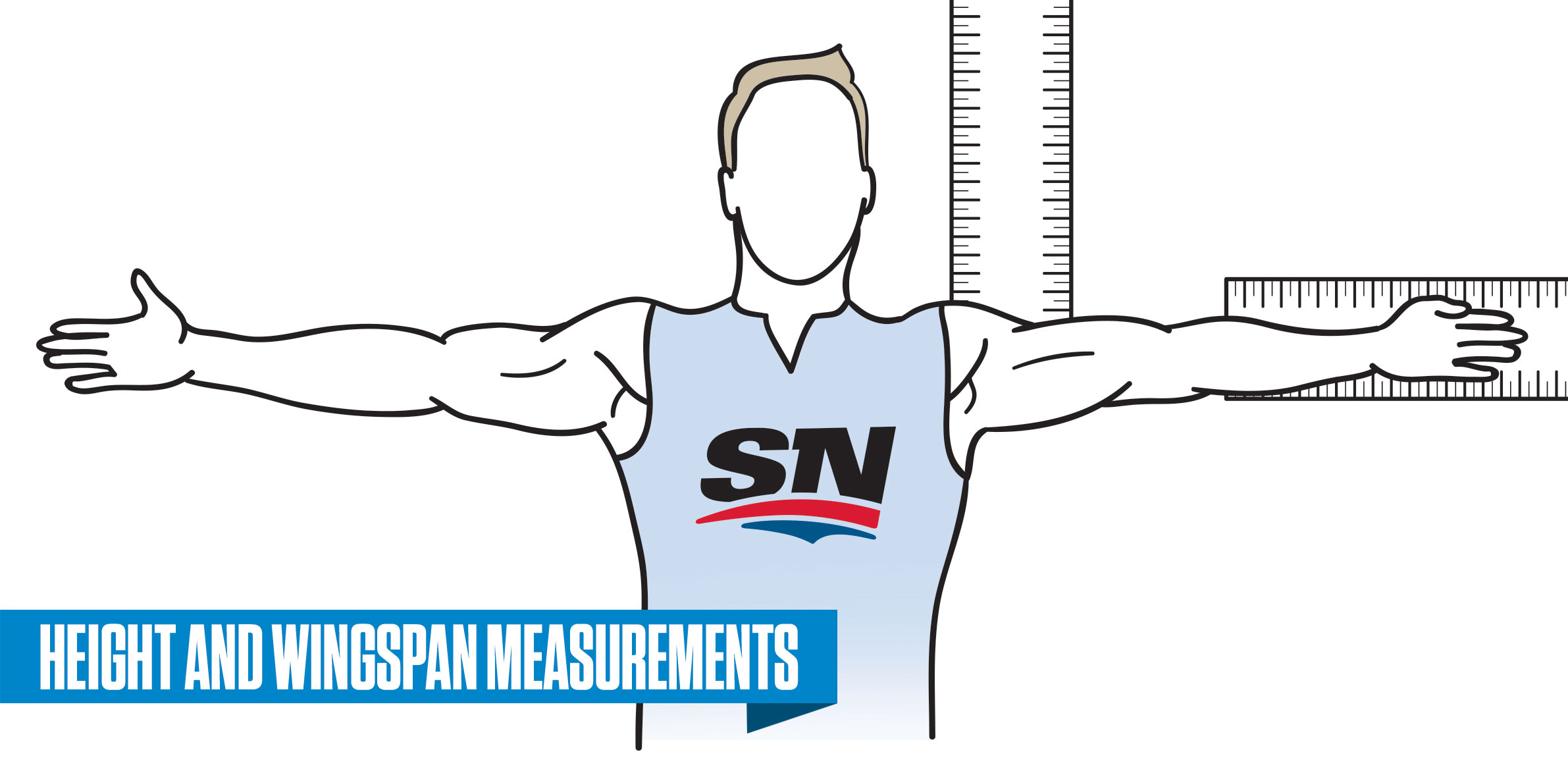
Each player's height and wingspan measurements are taken as follows: without footwear, athletes stand with their heels together and the back of their feet touching the base of a portable height-measuring device. The athletes are instructed to take a large breath, and their height is measured to within the nearest 0.25 inch from the highest point on the measuring device.
Next, the athlete extends their arms straight out to the sides, and their wingspan is measured to the nearest 0.25 inch from middle finger tip to middle finger tip.
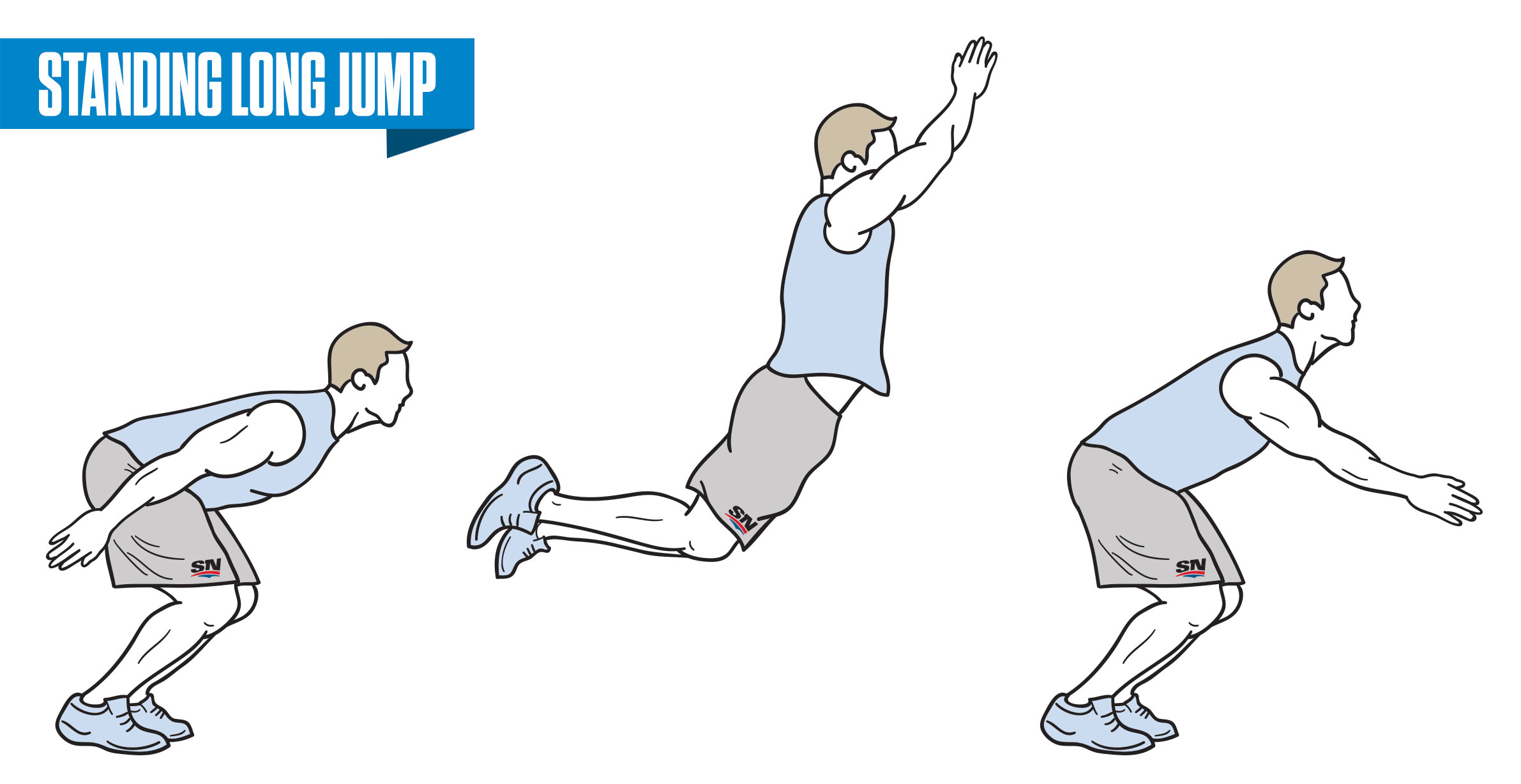
For the Standing Long Jump, each athlete stands with feet slightly apart, toes behind the jumping line. Then, using an arm swing to assist, they jump as far forward as possible. The distance from the jumping line to the heel mark in the best of three trials is recorded to the nearest centimetre.
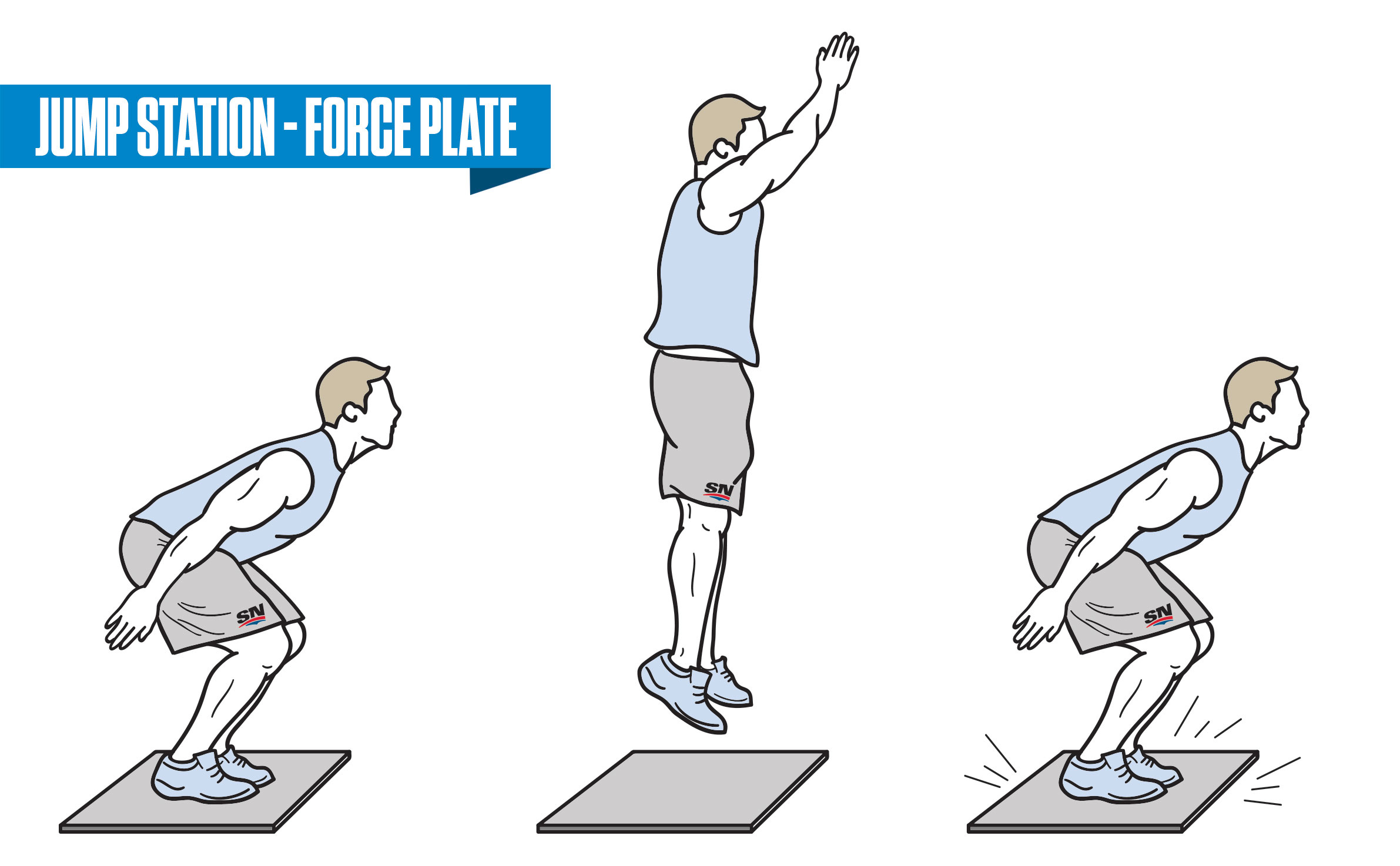
An AccuPower Dual Force Plate system is used to measure the direction, strength, and timing of the three-dimensional force each athlete produces during hockey-related movements. Two high-speed cameras are also used to capture video data. Overall, the test assesses movement efficiency, physical performance, and injury potential, according to the league.
The test is conducted by determining the ‘ground reaction force profile’ created by an athlete — the force exerted by the ground on a body in contact with it — during different versions of vertical jumps.
“The vertical jump combines the two qualities of sprint (quick) and agility (smooth) components. Ideally, athletes quickly load the vertical jump on their downward descent, before smoothly stopping and using this energy to accelerate upwards to jump,” the league’s fitness testing summary states. “By analyzing the whole force vs. time curve, teams can individualize and identify what the athlete needs to improve upon in order to dramatically increase their performance and reduce injury rates.”
Three types of jumps are carried out — vertical jump (with arm swing), no-arm jump (no arm swing, hands on hips), and squat jump (squat start, hands on hips). Each jump test includes three separate attempts separated by 10 seconds of rest, with the best attempt from each recorded.
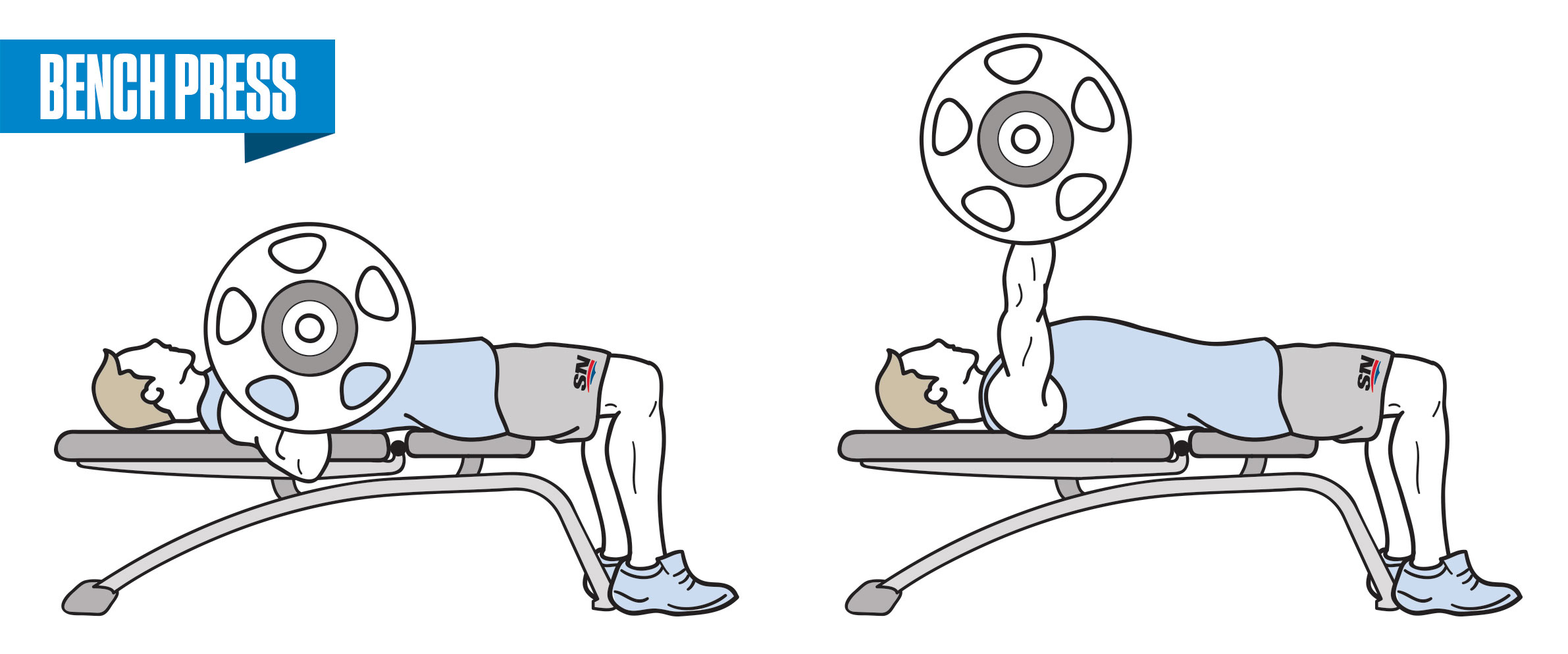
Using a standard padded bench press, the athletes lift 50 per cent of their body weight, laying on their back and gripping the barbell with thumbs roughly shoulder-width apart. The starting position is with arms fully extended — the bar is then lowered to the chest, and after a slight pause, the athlete will push the bar as quickly as possible until their arms are fully extended.
The weight to be lifted is determined as follows:
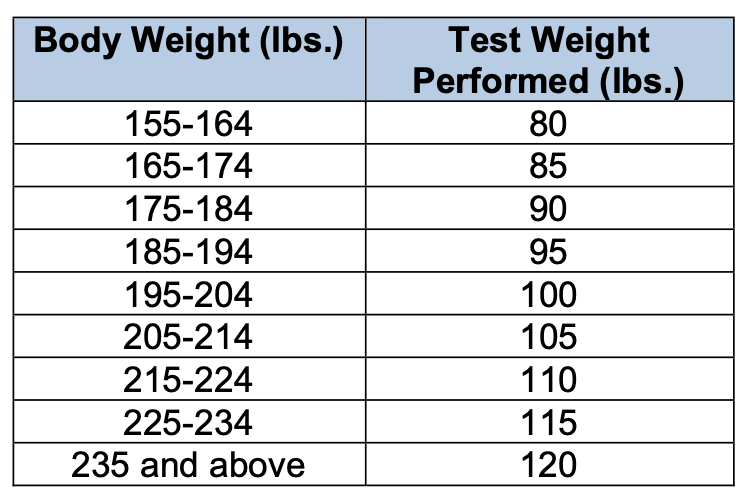
Each player will perform three reps at maximum velocity with a pause between each rep. A device is also used to measure the velocity of the bar and the athlete’s ability to produce power.
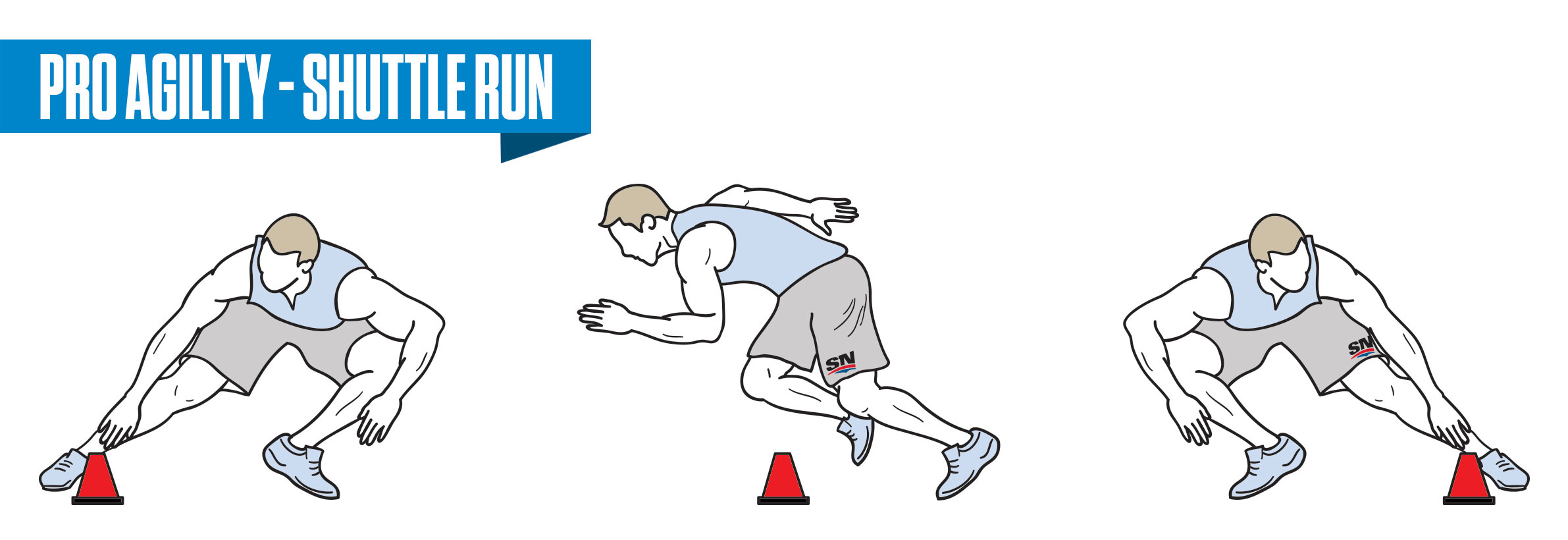
For the pro agility shuttle run, each athlete carries out a 5-10-5 yard shuttle (or 15-35-15 feet) to assess their multidirectional speed, agility, whole-body reaction plus control. The test is timed, using a laser timer.
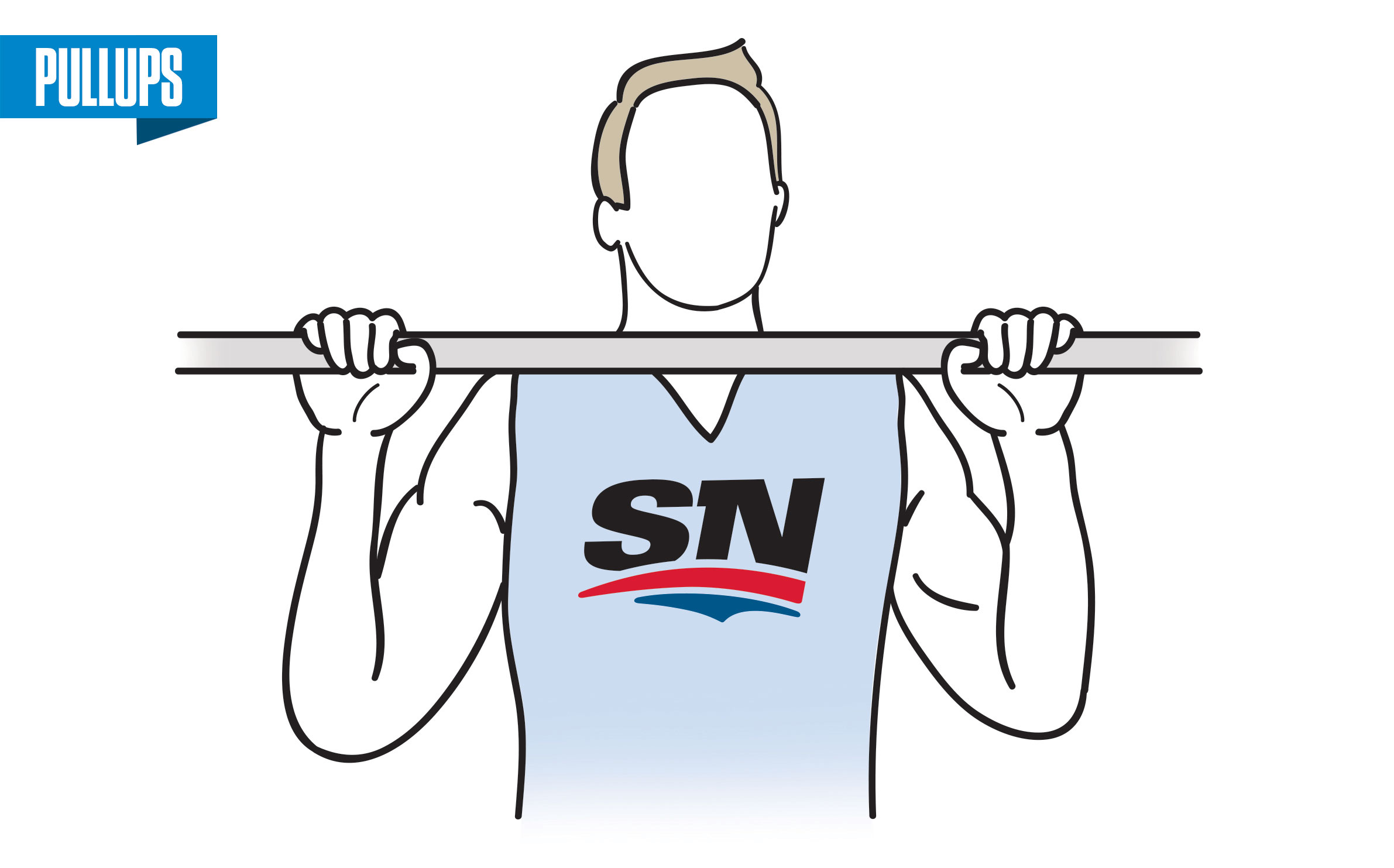
Each player records the maximum number of consecutive pullups performed with correct technique, to assess their forearm and upper-arm flexor muscular strength, their endurance, and their core stabilization.
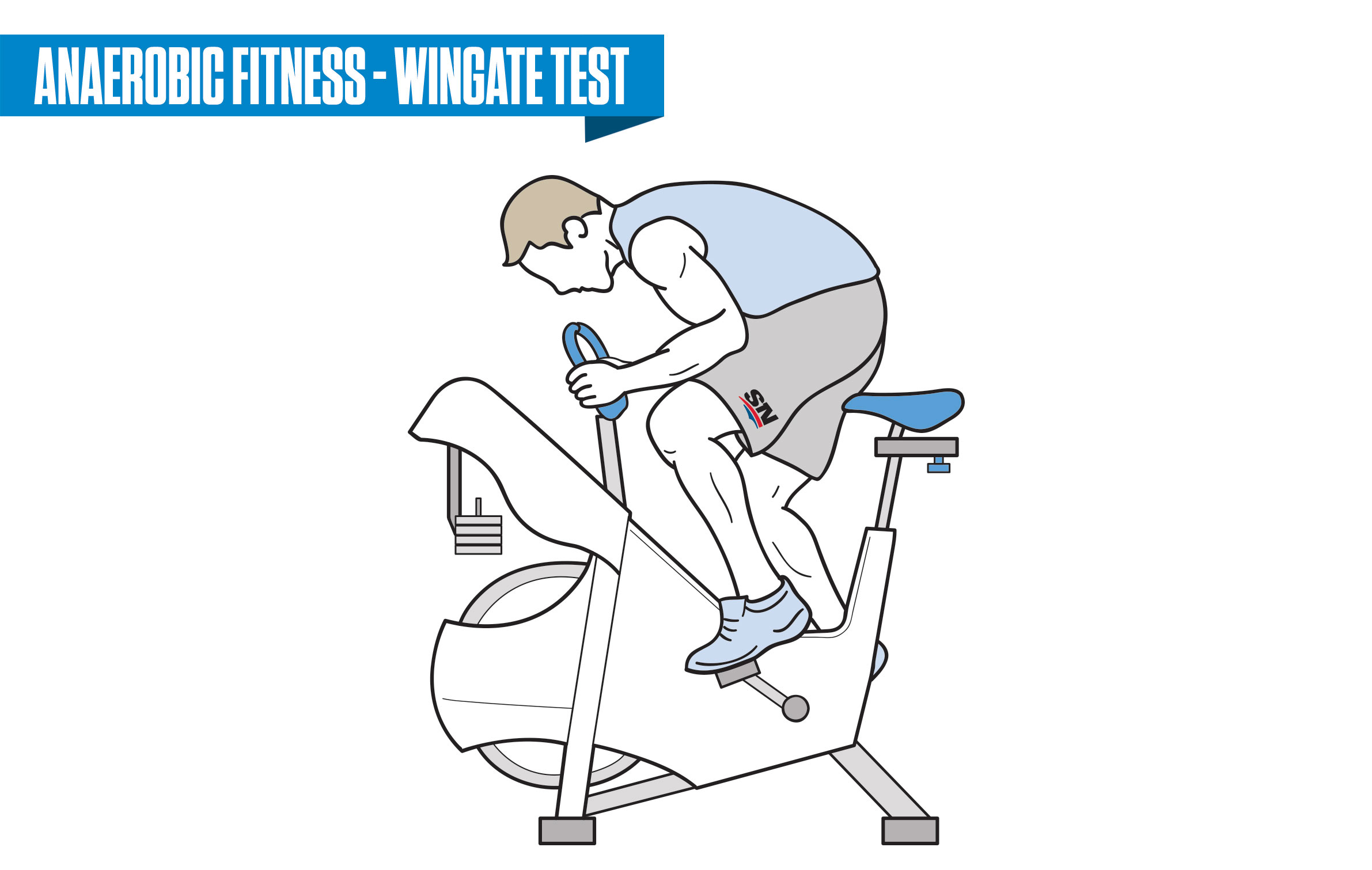
The Wingate test takes place on the spin bike (Watt Bike) cycle ergometer. The test goes like so: the athlete warms up by pedalling at a low resistance for two minutes — then, they must pedal at a progressively quicker cadence so that by the time the designated workload has been reached, they are pedalling at maximal capacity.
They must pedal at their maximal capacity against the designated workload for 30 seconds. Revolutions are recorded for each five-second period. The power output is then calculated for both the peak five-second period and the 30-second duration
According to the combine’s official schedule, Wright will be part of the fifth group going through the testing circuit. Cooley will be part of the eighth group, while Slafkovsky will not take part in the testing as he just returned from international duty with Slovakia at the World Championship (putting up nine points through eight games).
The full schedule for testing participants is below:
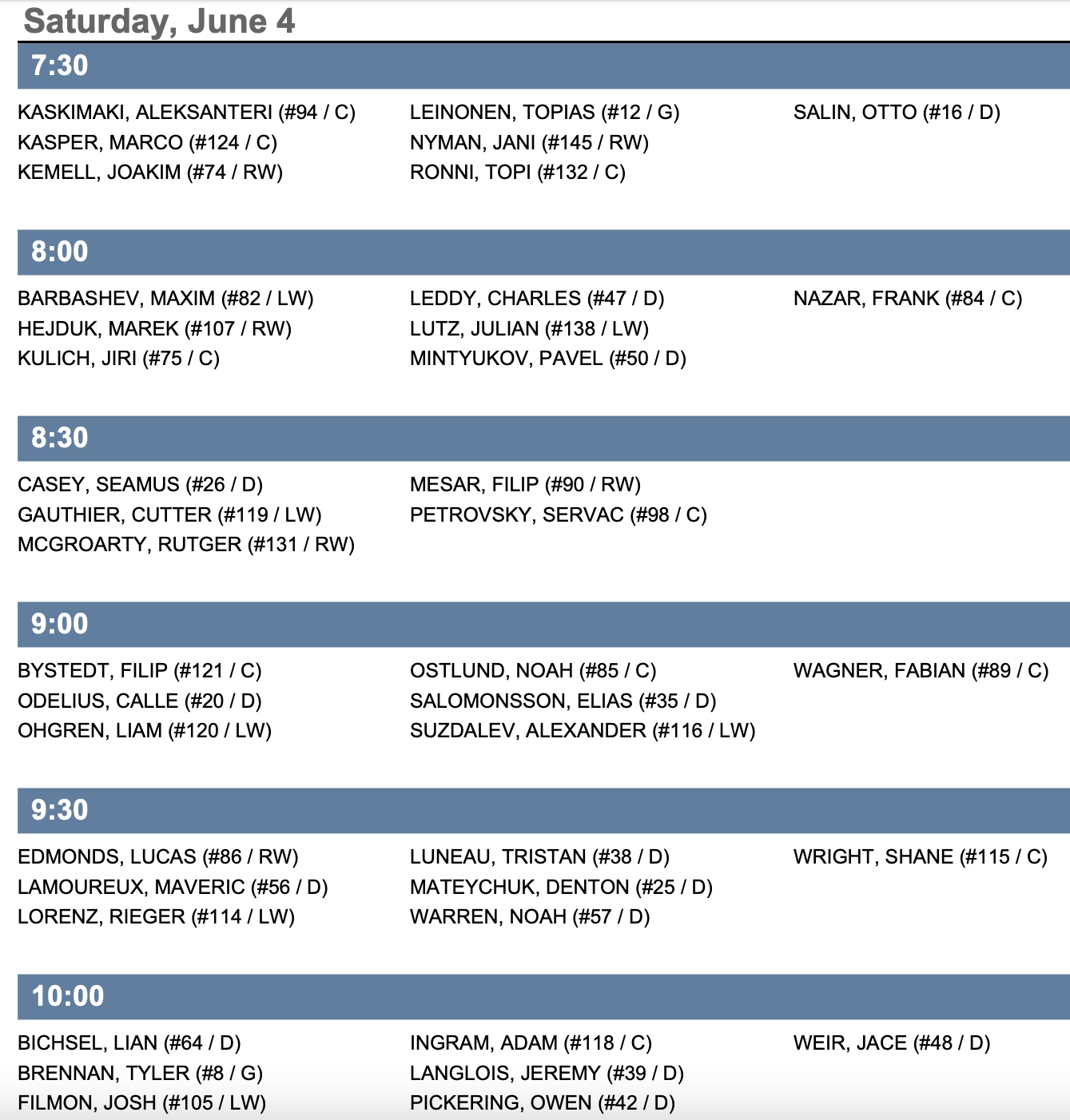
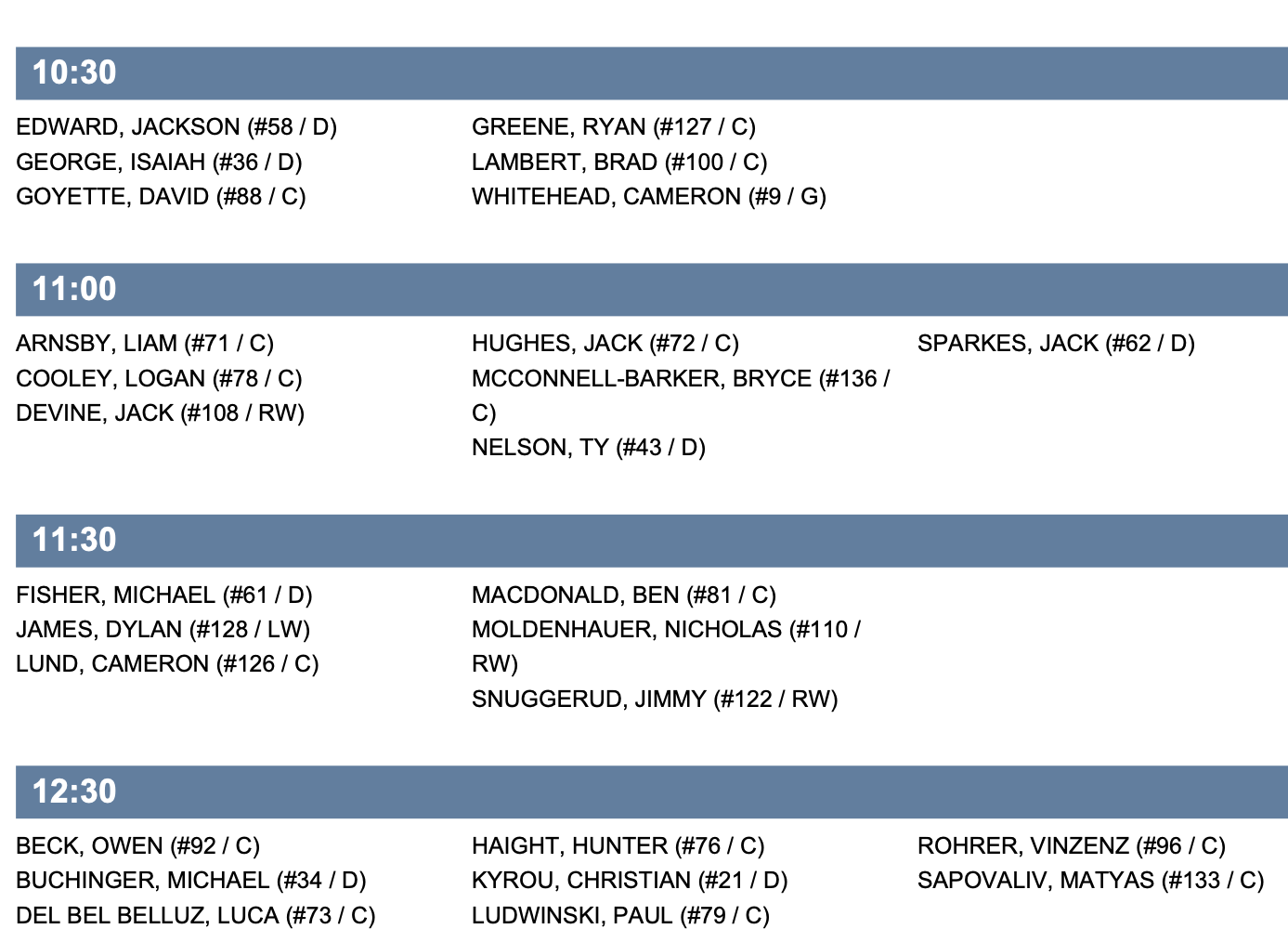
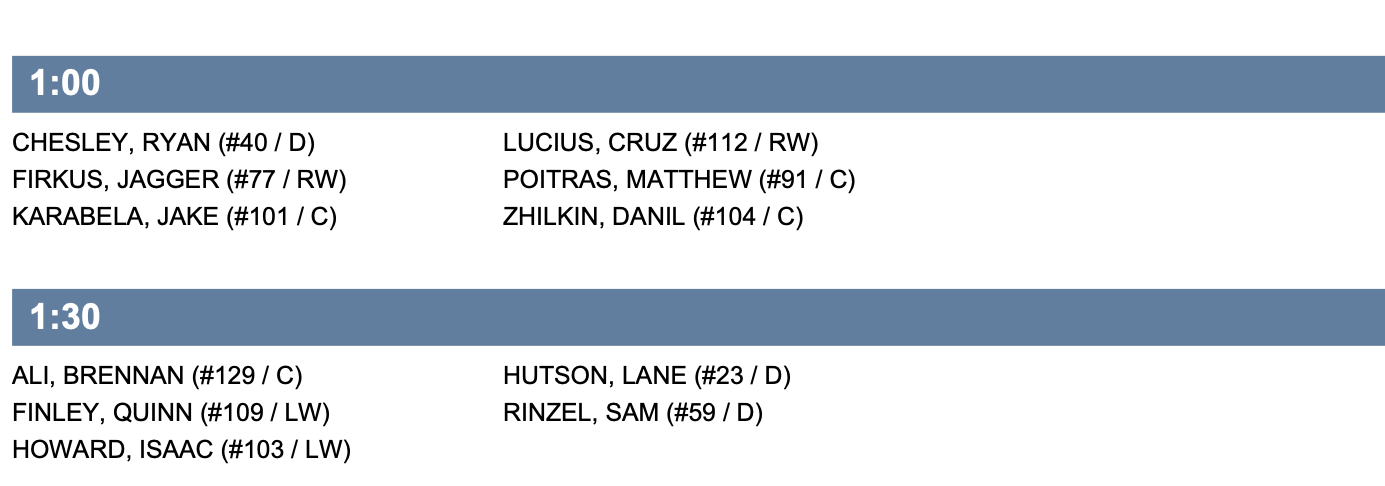
Graphics courtesy of Erika Vanderveer. Combine testing information courtesy of the NHL.








































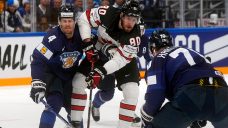


 2:33
2:33 5:37
5:37 4:01
4:01
COMMENTS
When submitting content, please abide by our submission guidelines, and avoid posting profanity, personal attacks or harassment. Should you violate our submissions guidelines, we reserve the right to remove your comments and block your account. Sportsnet reserves the right to close a story’s comment section at any time.